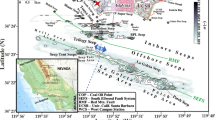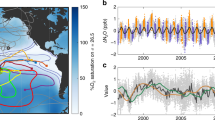Abstract
— There is an increasing interest regarding the fate of nitrogenous compounds emitted from agricultural activities in the southeastern United States. Varying climate, topography and proximity to the Atlantic Ocean particularly complicates the problem. An increased understanding of the interaction of synoptic scale flow with mesoscale circulations would constitute a significant improvement in the assessment of regional scale transport and deposition potential. This knowledge is necessary to facilitate current and future modeling attempts in the region as well as for planning future monitoring sites to develop a cohesive regional policy for the abatement strategies. The eastern portion of North Carolina is used as a case example due to its high, localized emission of nitrogen compounds from agricultural waste. Three periods: July 2–7, 1998, October 5–11, 1998, and December 12–19, 1998, corresponding to three different seasons were studied. Surface wind and thermodynamic patterns were analyzed using surface observing stations and archived-model analysis results centered over eastern North Carolina. Diurnal and seasonal patterns were identified for dispersion and concentration values obtained using an air pollution transport and dispersion model. This mesoscale information was used to draw qualitative conclusions regarding the possible trends and deviations in the dynamic trajectories as well as the resulting near-surface concentrations and deposition potential in eastern North Carolina. Results show that highly variable seasonal and diurnal atmospheric circulations characterize the study domain. These variations can significantly impact the transport and fate of pollutants released in this region. Generally, summer provides the highest potential for localized deposition, while fall can provide opportunity for long-range transport. The results also suggest that mean climatological or seasonally averaged flow patterns may not be sufficient for analyzing the fate of the agricultural releases in this region. At the very least, mean and variance based analysis is required to capture the climatology of the dispersion and deposition patterns. These patterns in eastern North Carolina appear to be sensitive to the strength and location of air mass boundaries along the coastal plain, indicating diverse scale interactions affecting the variability and uncertainty in the regional pollutant transport.
Similar content being viewed by others
Author information
Authors and Affiliations
Additional information
(Received August 16, 2000, accepted April 18, 2001)
Rights and permissions
About this article
Cite this article
Rhome, J., Niyogi, D. & Raman, S. Assessing Seasonal Transport and Deposition of Agricultural Emissions in Eastern North Carolina, U.S.A.. Pure appl. geophys. 160, 117–141 (2003). https://doi.org/10.1007/s00024-003-8769-4
Issue Date:
DOI: https://doi.org/10.1007/s00024-003-8769-4




